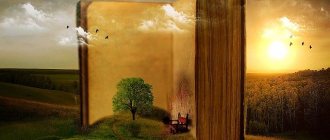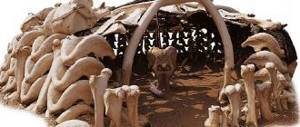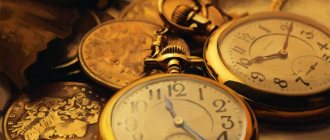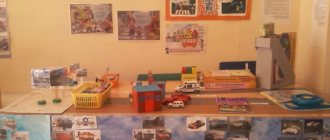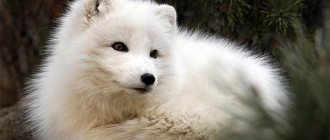Section II. Russian Empire (XVIII - early XX centuries)
Topic 3. Russia in the 18th century
1) Who carried out reforms in Russia at the beginning of the 18th century?
Peter I
Posthumous romanticized portrait of Peter I. Artist Paul Delaroche (1838).
2) What is the name of the city that became the capital of Russia in the era of Peter I?
Saint Petersburg.
3) In which city in the 18th century was the first university in Russia created?
In Moscow.
4) Which Russian scientist played a major role in the creation of the first university in Russia?
Lomonosov Mikhail Vasilievich.
5) When and under which Russian empress did the Crimean Peninsula become part of Russia?
On April 8, 1783, Catherine II signed a manifesto on the “Annexation of the Crimean Peninsula, Taman Island and the entire Kuban side under the Russian Empire.”
Catherine II Alekseevna - Empress and Autocrat of All Russia. She pursued a policy of enlightened absolutism.
6) Who was A.V. Suvorov?
Alexander Vasilyevich Suvorov is a great Russian commander, military theorist, strategist, national hero of Russia.
7) Which monument is the symbol of the city of St. Petersburg?
Bronze Horseman monument to Peter I.
 In which city is the largest museum in Russia, the Hermitage, located?
In which city is the largest museum in Russia, the Hermitage, located?
Saint Petersburg.
Topic 4. Russia in the 19th century
1) When was the Patriotic War?
The Patriotic War took place in 1812.
2) What is the name of the largest battle of the Patriotic War?
Battle of Borodino.
3) Who won the Patriotic War?
Russia won. Napoleon's army was almost completely destroyed.
4) Who was the commander-in-chief of the Russian army during the war?
Mikhail Illarionovich Golenishchev-Kutuzov - Russian commander and diplomat, field marshal general from the Golenishchev-Kutuzov family, commander-in-chief of the Russian army during the Patriotic War of 1812. The first full holder of the Order of St. George.
Portrait of M.I. Kutuzov brushes R.M. Volkova
5) Who are the Decembrists?
Russian revolutionaries who rebelled against autocracy and serfdom in December 1825.
6) When was serfdom abolished in Russia?
The abolition of serfdom occurred in 1861.
7) Under which Russian emperor was serfdom abolished?
Under Alexander II.
Alexander II Nikolaevich - Emperor of All Russia. Conducted large-scale reforms. Abolished serfdom (manifesto of February 19, 1861). Under him, victory was won in the Russian-Turkish War (1877–1878). Died as a result of a terrorist attack organized by the secret organization "People's Will".
 When did Central Asia join Russia?
When did Central Asia join Russia?
In 1880.
9) Who was A.S. Pushkin?
Alexander Sergeevich Pushkin is a great Russian poet, playwright and prose writer, literary critic, translator, publicist, historian.
10) Which Russian scientist discovered the periodic law of chemical elements in the second half of the 19th century?
Dmitry Ivanovich Mendeleev is a Russian scientist-encyclopedist: chemist, physical chemist, physicist, metrologist, economist, technologist, geologist, meteorologist, oil worker, teacher, aeronaut, instrument maker. Professor at St. Petersburg University. Among the most famous discoveries is the periodic law of chemical elements, one of the fundamental laws of the universe, integral to all natural science.
11) Who was L.N. Tolstoy?
Lev Nikolaevich Tolstoy - count, great Russian writer, thinker, known throughout the world, educator, publicist, religious thinker. Participant in the defense of Sevastopol.
12) Who was P.I. Chaikovsky?
Pyotr Ilyich Tchaikovsky is a great Russian composer, conductor, teacher, musical and public figure, music journalist.
13) Who was F.M. Dostoevsky?
Fyodor Mikhailovich Dostoevsky is a great Russian writer, thinker, philosopher and publicist. Dostoevsky is a classic of Russian literature and one of the best novelists of world significance.
Topic 5. The Russian Empire at the beginning of the twentieth century
1) What main religions were represented in Russia at the beginning of the twentieth century?
The main religions represented in Russia are Christianity (Orthodoxy predominates), as well as Islam and Buddhism.
2) Representatives of which religion made up the majority of the population of the Russian Empire?
The majority of the population is Orthodox.
3) When did the First Russian Revolution take place?
In 1905.
4) What was the main result of the First Russian Revolution?
New government bodies emerged—the beginning of the development of parliamentarism; some limitation of autocracy; democratic freedoms were introduced, censorship was abolished, trade unions and legal political parties were allowed; the bourgeoisie received the opportunity to participate in the political life of the country; the situation of workers has improved, wages have increased, the working day has decreased to 9–10 hours; redemption payments to peasants have been cancelled, and their freedom of movement has been expanded; The power of zemstvo chiefs is limited.
5) Who was the leader of the Bolshevik party?
Vladimir Ilyich Lenin - Russian revolutionary, Soviet political and statesman, founder of the Russian Social Democratic Labor Party (Bolsheviks), one of the main organizers and leaders of the October Revolution of 1917 in Russia, chairman of the Council of People's Commissars (government) of the RSFSR, creator of the first in the world history of the socialist state.
6) When was the First World War?
The First World War was on July 28, 1914.
7) Who was A.P. Chekhov?
Anton Pavlovich Chekhov is a famous Russian writer, playwright, classic of world literature.
 What was the name of the Russian scientist and inventor of radio?
What was the name of the Russian scientist and inventor of radio?
Alexander Stepanovich Popov.
9) What is the name of the theater in Moscow, famous all over the world for its productions of opera and ballet?
Big theater.
Collection of difficult test questions on the History of Russia
The correct answer is marked with a + sign
1. In 991, Prince Vladimir Svyatoslavovich sent Bishop Joachim Korsunyanin and governor Dobrynya and his retinue to Novgorod to baptize the city residents. What was the name of the legendary Novgorod thousand, who led the uprising against the missionaries?
— Bogomil
— Mironeg
+ Steal
2. In what year was the first Community of Sisters of Charity (Holy Trinity) established in Russia?
+ 1844
— 1842
— 1846
3. At which river in 1607 did the rebels led by I. Bolotnikov suffer a crushing defeat from the government troops of V. Shuisky?
— Oka
+ Eight
— Zusha
4. Which of the sons of Grand Duke Vladimir Svyatoslavich wooed the widow of the Swedish king Eric Sigrid the Killer and was burned at the feast along with the other suitors?
— Sudislav Pskovsky
— Svyatoslav Drevlyansky
+ Vsevolod Volynsky
5. The capture of which city in June 1919 became the largest military-political success of the White movement in the South of Russia?
— Ekaterinoslav
— Poltava
+ Kharkov
6. Which Russian explorer, during the Amur expedition (1849-1855), first proved that Sakhalin is an island?
+ Nevelsky
— Lazarev
— Atlasov
7. “What other peoples have turned into a habit, an instinct, we have to hammer in with blows of a hammer...” Which Russian philosopher does this statement belong to?
— V. Solovyov
— N. Berdyaev
+ P. Chaadaev
8. In 1036, Yaroslav the Wise won a landslide victory over the Pechenegs near Kiev, after which their raids on Rus' practically ceased. What temple was founded on the site of the battle?
+ Hagia Sophia
— Tithe Church
— St. Cyril Church
9. What was the name of the Russian Grand Duke, who in 1924, while in exile, proclaimed himself Emperor of All Russia?
— Alexander Mikhailovich
+ Kirill Vladimirovich
— Dmitry Pavlovich
test 10. In the second half of the 17th century , several large religious sects arose in Russia. Members of which sect called their communities ships controlled by helmsmen with unlimited power?
+ eunuchs
— Molokans
- Doukhobors
11. In what year did the trial of I. Brodsky take place, at which the poet was accused of “parasitism” and sentenced to five years of forced labor in a remote area?
— 1968
— 1962
+ 1964
12. In the summer of 1572, Russian troops on the outskirts of Moscow won a major victory over the Crimean-Turkish army under the command of Khan Devlet I Giray. What was the name of this battle?
- Battle of the Black Island
+ Battle of Molodinsk
- Battle of the Destinies
13. Which Soviet foreign intelligence officer, who fled the USSR in 1937, published a book in the United States entitled “I Was an Agent of Stalin”?
— Stashinsky
+ Krivitsky
— Khokhlov
14. In what year did the closed trial of members of the so-called Jewish Anti-Fascist Committee take place?
+ 1952
— 1951
— 1947
15. Who headed the Russian Ministry of Foreign Affairs in 1906-1910?
— V. N. Lamzdorf
+ A. P. Izvolsky
— S. D. Sazonov
16. What was the name of the first right-wing radical conservative organization in Russia, which took shape in 1900?
— Russian monarchist party
+ Russian collection
— Union of the Russian People
17. On the eve of the Battle of Borodino, a bloody battle took place for the Sheverdinsky redoubt. Who led the defense of the redoubt throughout the day and retreated from positions only after Kutuzov’s order?
— D. V. Golitsyn
+ A. I. Gorchakov
— P. S. Loshkarev
18. Who headed the military ministry of the Russian Empire in 1810-1812?
+ M. B. Barclay de Tolly
— A. A. Arakcheev
— A. I. Gorchakov
19. Who, on the recommendation of Stalin, was elected in 1925 as General Secretary of the Central Committee of the Communist Party (b)U (party leader of Soviet Ukraine)?
— A. Ya. Shumsky
— V. Ya. Chubarya
+ L. M. Kaganovich
test-20. Which cruiser was sent to the Persian Gulf at the end of 1902 to demonstrate the power of the Russian navy?
+ "Askold"
- "Ochakov"
— “Peresvet”
21. Which Russian admiral was appointed commander of the Baltic Fleet after the outbreak of the First World War?
— I. M. Dikov
+ N. O. von Essen
— A. D. Bubnov
22. In 1591, under unclear circumstances, Tsarevich Dmitry died in Uglich. What was the name of the clerk who was suspected of murder and torn to pieces by an angry crowd along with his close relatives?
+ M. Bityagovsky
— R. Rakov
— E. Vyluzgin
23. Who, at a meeting of the Third State Duma, uttered the famous phrase: “You need great upheavals, we need Great Russia!”?
+ P. A. Stolypin
— P. N. Milyukov
— Nicholas II
24. In 1922, the position of General Secretary of the Central Committee of the RCP (b) was established in Soviet Russia. Who was first appointed to this post?
— V. I. Lenin
+ J.V. Stalin
— L. D. Trotsky
25. What was the name of the naval officer who in May 1918 was sentenced to death by the Supreme Revolutionary Tribunal for “saving the Baltic Fleet”?
— P. M. Perepelkin
+ A. M. Shchastny
— A. I. Nepenin
26. In what year was the manuscript “The Tale of Igor’s Campaign” first translated from Old Russian and published?
- 1795
+ 1800
— 1804
27. From December 1941 until the very end of the Great Patriotic War, Soviet intelligence waged a successful radio game with the Abwehr called “Monastery”. What was the operational pseudonym of intelligence officer A.P. Demyanov, who gained confidence in the Nazis?
- "Goethe"
+ "Heine"
- "Henry"
28. At the end of the Livonian War, Stefan Batory unsuccessfully besieged Pskov for five months (August 1581-January 1582). Who, with the rank of “great governor,” led the heroic defense of the city?
— V. F. Skopin-Shuisky
+ I. P. Shuisky
— N. I. Ovchin-Pleshcheev
29. In which city in 1654 did the hetman of the Zaporozhian Army B. Khmelnitsky swear allegiance to the Russian Tsar Alexei Mikhailovich?
- Kyiv
— Korsun
+ Pereyaslavl
test_30. What was the name of the operation (literary case) of the Soviet state security agencies to collect data about the impending attack of Nazi Germany on the Soviet Union?
- "Key"
- "Duck"
+ "Undertaking"
31. How, according to the “Table of Ranks” approved by Peter I in 1722, should one address persons with the rank of fifth class?
- “Your Honor”
+ “Your Highness”
- “Your Honor”
32. In what year was the Council of People's Commissars transformed into the Council of Ministers of the USSR?
— 1945
+ 1946
— 1953
33. Who was the first president of the Academy of Sciences established by Catherine I in 1725?
+ L. L. Blumentrost
— I. H. Buchsbaum
— G. B. Bilfinger
34. What was the name of the Soviet military intelligence officer who headed the illegal station in Belgium in 1938-1940?
— A. M. Gurevich
+ L. Trepper
— M. V. Makarov
35. Which Russian political figure made a famous speech in the Duma during the First World War, which went down in history under the title “Stupidity or Treason?”?
— M. V. Rodzianko
+ P. N. Milyukov
— A. I. Guchkov
36. Which of his associates did Peter I in 1696 commission to study the fundamentals of military art in Western countries and upon arrival submit a detailed report (“Military Regulations”) about this?
— F. Ya. Lefort
— F. A. Golovin
+ A. A. Veide
37. Which architect was the author of the original project for the construction of the Cathedral of Christ the Savior?
— G. V. Baranovsky
+ A. L. Vitberg
— V. I. Sobolshchikov
38. Under which city in 1237 did Prince Daniil of Galicia defeat the knights of the Teutonic Order and thereby stop the expansion of the crusaders into the Galician-Volyn lands?
— Trebovl
— Zvenigorod
+ Drogichin
39. In what year did a detachment under the command of Colonel P.I. Yakovlev destroy and burn the Zaporozhye Sich?
+ 1709
- 1701
- 1699
test*40. What battle brought the first victory to the Russian fleet on the Black Sea?
+ Balaklava fight
- Battle of Kaliakria
— battle at Sudzhuk-Kale
Section III. History of the USSR
Topic 6. History of the USSR before the Great Patriotic War
1) What revolution took place in Russia in 1917?
Great October Socialist Revolution.
2) What was the name of the last Russian emperor?
Nicholas II - Emperor of All Russia, colonel. The reign of Nicholas II was marked by the economic development of Russia and at the same time the growth of socio-political contradictions in it, the revolutionary movement, which resulted in the revolution of 1905–1907 and the February Revolution of 1917; the war with Japan, as well as Russia’s participation in the military blocs of European powers and the First World War.
Nicholas II abdicated the throne during the February Revolution of 1917 and was under house arrest with his family in the Tsarskoe Selo Palace. In the summer of 1917, by decision of the Provisional Government, he and his family were sent into exile in Tobolsk, and in the spring of 1918, the Bolsheviks moved him to Yekaterinburg, where in July 1918 he was shot along with his family and associates. Canonized (along with his wife and children) by the Russian Orthodox Church.
3) Which party came to power in Russia in the fall of 1917?
The Bolshevik Party led by V.I. Lenin.
4) What was the name of the state that was created in 1922 on the territory of the former Russian Empire?
USSR (Union of Soviet Socialist Republics).
5) Under which leader of Russia was the church separated from the state, and the school from the church?
Under Vladimir Ilyich Lenin.
6) What was the name of the policy to create large-scale industry in the USSR?
Industrialization.
7) What was the name of the policy for creating collective farms in the countryside in the USSR?
Collectivization.
 What was the most important achievement of the USSR in the field of education in the first half of the twentieth century?
What was the most important achievement of the USSR in the field of education in the first half of the twentieth century?
Elimination of illiteracy.
Topic 7. USSR during the Great Patriotic War (1941 - 1945)
1) When was the Great Patriotic War?
From June 22, 1941 to May 9, 1945.
2) Which countries were allies of the USSR in the fight against Nazi Germany?
The allies of the USSR were the USA, Great Britain, the Mongolian People's Republic, the Tuvan People's Republic (countries of the anti-Hitler coalition).
3) What was the name of the most important (turning point) battle of the Great Patriotic War?
Battle of Stalingrad.
4) Who were G.K. Zhukov and K.K. Rokossovsky?
Georgy Konstantinovich Zhukov is a four-time Hero of the Soviet Union, a holder of two Orders of Victory, and many other Soviet and foreign orders and medals. During the Great Patriotic War, he successively held the positions of Chief of the General Staff, Front Commander, Member of the Headquarters of the Supreme High Command, and Deputy Supreme Commander-in-Chief. In the post-war period, he served as Commander-in-Chief of the Ground Forces, commanding the Odessa and then the Ural military districts. After the death of I.V. Stalin, he became the first deputy minister of defense of the USSR.
Konstantin Konstantinovich Rokossovsky - Soviet and Polish military leader, twice Hero of the Soviet Union (1944, 1945). Marshal of the Soviet Union (1944), Marshal of Poland (1949). The only marshal of two countries in the history of the USSR. He commanded the Victory Parade on June 24, 1945 on Red Square in Moscow. One of the greatest commanders of the Second World War.
5) Who won the Great Patriotic War?
THE USSR.
6) In which city did Soviet soldiers M. Egorov and M. Kantaria raise the Victory Banner in May 1945?
In Berlin, Germany.
7) How many Soviet people died during the Great Patriotic War?
27 million people.
 What holiday is celebrated in Russia on May 9?
What holiday is celebrated in Russia on May 9?
Victory Day.
Topic 8. USSR in the post-war period (1945 - 1991)
1) In what year and on the initiative of which Soviet leader was Crimea transferred from the RSFSR to the Ukrainian SSR?
On February 19, 1954, on the initiative of N.S. Khrushchev.
2) Who was the Chief Designer of the first Soviet spacecraft of the USSR?
Sergei Pavlovich Korolev is a Soviet scientist, designer and main organizer of the production of rocket and space technology and missile weapons of the USSR, the founder of practical cosmonautics. One of the largest figures of the 20th century in the field of space rocketry and shipbuilding. On his initiative and under his leadership, the first artificial Earth satellite and the first cosmonaut on the planet, Yuri Gagarin, were launched.
3) What was the name of the world's first astronaut?
Gagarin Yuri Alekseevich - Soviet pilot-cosmonaut, Hero of the Soviet Union, holder of the highest insignia of a number of states, honorary citizen of many Russian and foreign cities. On April 12, 1961, Yuri Gagarin became the first person in world history to fly into outer space.
4) In what year did Yu.A. Gagarin made the world's first flight into space?
April 12, 1961.
5) What is the name of the world's first female astronaut?
Valentina Vladimirovna Tereshkova - Soviet cosmonaut, the world's first female cosmonaut, major general (1995). Candidate of Technical Sciences, Professor. The only woman in the world to fly solo in space. The first woman in Russia with the rank of major general.
6) What important international sporting event took place in Moscow in 1980?
Olympics.
7) What was the name of M.S.’s reform policy? Gorbachev?
Perestroika.
 Who was the President of the USSR?
Who was the President of the USSR?
Mikhail Sergeevich Gorbachev is a Soviet and Russian state, political and public figure. The last General Secretary of the CPSU Central Committee. The last Chairman of the Presidium of the Supreme Soviet of the USSR, then the first Chairman of the Supreme Soviet of the USSR. The only President of the USSR. He has a number of awards and honorary titles, the most famous of which is the 1990 Nobel Peace Prize. Included in the list of the 100 most studied personalities in history.
9) How many Soviet republics were part of the USSR in the 1960-1980s?
15 republics.
10) When did the collapse of the USSR occur?
The collapse of the USSR occurred on December 26, 1991.
11) What organization was created after the collapse of the USSR by some former Soviet republics?
CIS (Commonwealth of Independent States).
12) Who was A.I. Solzhenitsyn?
Solzhenitsyn Alexander Isaevich is a Russian writer, playwright, publicist, poet, public and political figure. Winner of the Nobel Prize in Literature (1970). A dissident who for several decades (1960–1980s) actively opposed communist ideas, the political system of the USSR and the policies of its authorities.
History lesson-game: Russia at the turn of the 17th-18th centuries. 7th grade
Developed by a history teacher
and social studies MOBUSOSH No. 1
Novokubansk, Krasnodar Territory
Ovcharenko Kirill Pavlovich
Lesson topic:
Final summary: Russia and the world at the turn of the 17th – 18th centuries.
Class:
7.
Lesson type:
lesson-game (in the form of the game “What? Where? When?”).
Form of organization of student activities:
work in groups.
Target:
Repetition and generalization of the studied material.
Tasks:
Educational: update knowledge on the history of Russia during the 17th-18th centuries.
Developmental: create meaningful and organizational conditions for the development of historical, worldview and information and communication competence of students.
Educational: create conditions for instilling in schoolchildren a sense of pride in their ancestors, respect and love for the Motherland.
Equipment:
— card with the team number;
— tasks for working in groups (Appendices 1-2);
- Handout.
During the classes.
- Organizing time.
The lesson is conducted in a playful way. The class is divided into 3-4 teams, 5-6 people each. Children come up with team names. Two students chosen by the teacher constitute the jury. They are given assignments in advance and checked by the teacher. Jury members receive the necessary instructions. They are provided with cards to record the teams' answer options. After each round they sum up the results. At the end of the game, the results are summed up and grades are given.
The game consists of 3 rounds. For each correct answer the team receives 1 point. The teacher acts as a leader.
- First round: “Personalities in the history of Russia.”
Teams are given forms (Appendix 1) with portraits of Russian history figures from the 17th-18th centuries, on which they must correctly write the name and surname of the historical figure.
Right answers:
- Peter I
- Suvorov A.V.
- Boris Godunov
- Catherine II
- Paul I
- Alexey Mikhailovich
- Stepan Razin
- Lomonosov M.V.
- Second round: “Chronological sequence.”
Teams receive forms (Appendix 2) with the task: Write down the Russian rulers in chronological order during the years 1700-1800.
Right answers:
- 1682-1725 Peter I
- 1725-1727 Catherine I
- 1727-1730 Peter II
- 1730-1740 Anna Ioannovna
- 1340-1741 Anna Leopoldovna and Ivan Antonovich
- 1741-1761 Elizaveta Petrovna
- 1761-1762 Peter III
- 1762-1796 Catherine II
- 1796-1801 Paul I
- Third round: “Historical What? Where? When?".
Teams receive small pieces of paper in which they will write down the correct answers, which will be reviewed by the jury. For each question, students have a minute to discuss.
Questions for the teams:
1. This period in the history of Russia was characterized by: uprisings, unrest of the Cossacks, intervention of other states, frequent changes of rulers. The reason for its beginning was the end of the legitimate dynasty of Russian tsars (Rurikovich) and the difficult economic situation in the country. Name this period.
Answer: Time of Troubles.
2. The real name of this adventurer is Grigory Otrepiev. As is known, he pretended to be Tsarevich Dmitry, who died under unclear circumstances in 1991 in the city of Uglich. And under what more famous name did he go down in history? Name it as accurately as possible.
Answer: False Dmitry I
3. These two heroes and leaders of the second militia of the Time of Troubles still stand today with a monument in the center of Moscow. What were their names?
Answer: Kuzma Minin and Dmitry Pozharsky.
4.In the first half of the 17th century. they became evidence of the rapid development of the all-Russian market in the country. The largest of them were: Arkhangelsk, Irbitsk, Svensk, Makaryevsk, Nizhny Novgorod. Name it.
Answer: Fair.
5. This set of laws, published during the reign of Alexei Mikhailovich, finally enslaved the Russian peasantry. What was it called and what year was it published.
Answer: Cathedral Code, 1649
6. Their appearance is associated with the church reform of Patriarch Nikon of 1653-1655. They got their name in honor of the fact that they were adherents of old traditions and rituals. Who are they?
Answer: Old Believers (schismatics).
7. Having a passion for military affairs, Peter I created two “amusing” regiments. It is they who will subsequently become the basis of the future army and guard. What were the names of these two regiments?
Answer: Semyonovsky and Preobrazhensky.
8. After the start of the Northern War, Russia found itself in extremely difficult conditions, since after it began it was immediately defeated near Narva. Also, the Russian army was left without all its artillery. What did Peter I order to do to rectify the situation?
Answer: pour the bells into cannons.
9. Among all the orders and reforms of Peter I, this event should be especially highlighted. Its implementation required enormous material costs and even human sacrifices. But the state received a new capital. In what year was it founded?
Answer: 1703
10. The reign of this monarch was characterized by the ideas of “enlightened absolutism”, which was based on the thoughts of such enlighteners as: Montesquieu, Diderot, Rousseau, Voltaire. Name this Russian monarch.
Answer: Catherine II.
11. The uprising under his leadership in 1773-1775. became the largest and bloodiest in history. This peasant war shook the feudal-serf empire of Catherine II to its foundations, forcing the authorities to look for ways to resolve the peasant issue. Name it.
Answer: Emelyan Pugachev.
12. Despite all the inconsistency of this figure in Russian history, one cannot fail to note such of his merits as: the capture of the Ochakov fortress in 1788, the creation of the Black Sea Cossack army, the creation of the Black Sea Fleet, the annexation and development of the Crimea or, as it is also called, Taurida. For which he received a prefix to his surname - Tavrichesky. Name it.
Answer: Potemkin.
- Summing up the lesson.
The jury calculates the final results and announces them to the students. The teacher gives grades.
List of used literature and Internet resources:
- History of Russia (IX-XXI) / Ed. A.Yu. Dvornichenko, V.S. Izmozika. M., 2005.
- History of Russia: from the beginning of the XVIII to the end of the XIX / Ed. A.N.Sakharov. – M.: AST Publishing House LLC. 2001.
- Gumilyov L.N. From Rus' to Russia. M., 1992.
- Solovyov S.M. Readings and stories on the history of Russia. - M.: Pravda, 1990.
- https://www.picture-shop.ru/page3-a1042.html
- https://www.licey1525.ru/gallery/?PAGE_NAME=section&SECTION_ID=9&AJAX_CALL=Y
- https://historydumai.ru/?page_id=278
- https://knowlg.com/taxonomy/term/11
- https://www.bahmatova.ru/index.php?id=7
- https://my.mail.ru/community/artpainting/38E945169AE93DC5.html
- https://biograf-book.narod.ru/personalii/16/stepan_razin.html
- https://nobelru.narod.ru/Lomonosov/1.html
